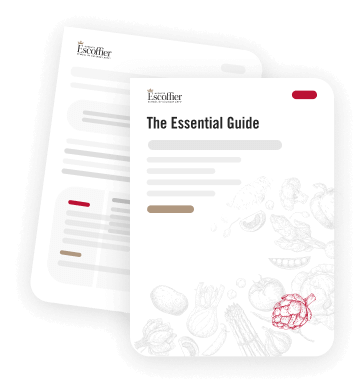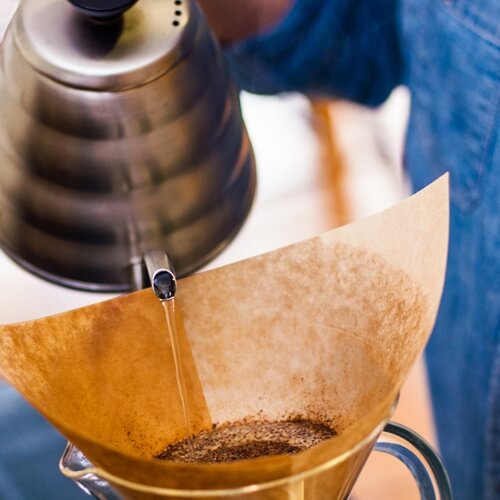Perfecting Your Pour-Over Coffee

When you have high-quality coffee beans, there are few ways you can mess up a cup of coffee. However, some methods of preparation are more effective when it comes to enhancing the flavor of those beans. One of the best ways to bring out the flavor of your favorite roasts, but limit the acidity and bitterness as a perfect complement to your baking & pastry arts, is to use a pour-over method. It can be pretty tricky the first time you try it, though, so here are a few pointers to keep in mind:
Pre-wet your filters
Many coffee filters made for pour-over coffee makers are thicker than your average drip coffee filter. Not only does pre-wetting the filters make it easier to get the process started, but it also eliminates the paper flavor that may transfer to your coffee if you’re using a mild brew. You don’t need to soak it, though. Just a little bit of hot water will do the trick. The water you use to brew should be about 200 degrees, according to Hand Ground, so just use the water that you brewed for the coffee.
“Evenly distribute the water you’re pouring.”
Pour evenly
The key to a well-balanced pour-over brew is to evenly distribute the water you’re pouring. Use a gooseneck kettle – a regular tea kettle’s spout is too thick and will make it difficult to pour properly. Start your pour quickly, evenly soaking all of the grounds in the filter for about 30 seconds, and let the drip go from a steady stream of coffee to a drip, then continue soaking the grounds. According to Serious Eats, if you’re brewing a dark roast, it should take about three minutes, and a light roast should take between three and four minutes. You’ll also probably end up using more water for a dark roast than you would a light one.
Don’t grind too fine
Your coffee grounds should be about the size of raw sugar. Any bigger and the flavor won’t transfer very well to your brew, and any smaller and the coffee will end up muddy. While you can certainly use a pour over with pre-ground coffee, the freshest taste will come from beans that were ground right before brewing. If you’re going to take the time to use a pour-over method instead of pressing the start button on your drip coffee maker, you might as well go all out, right?


